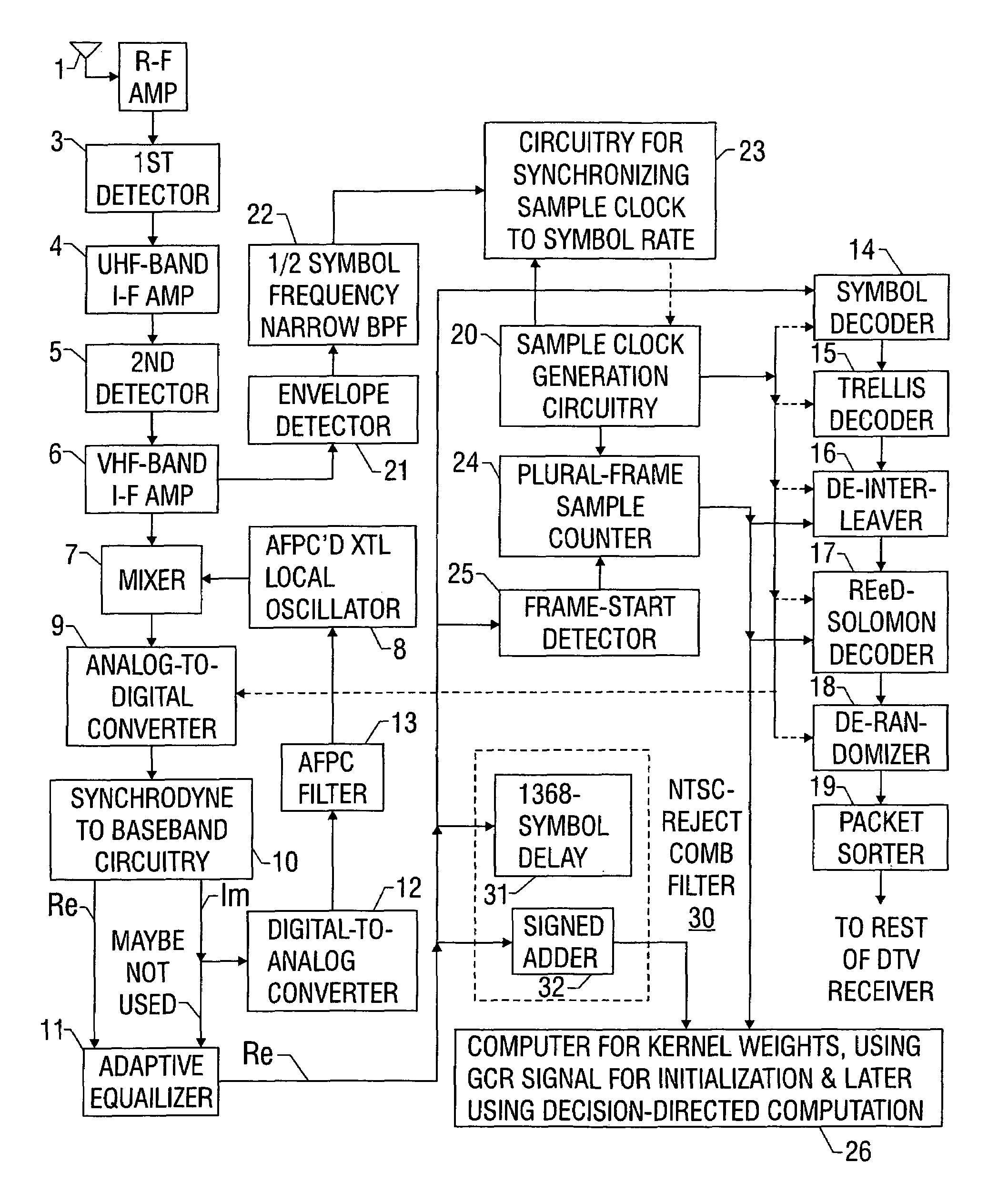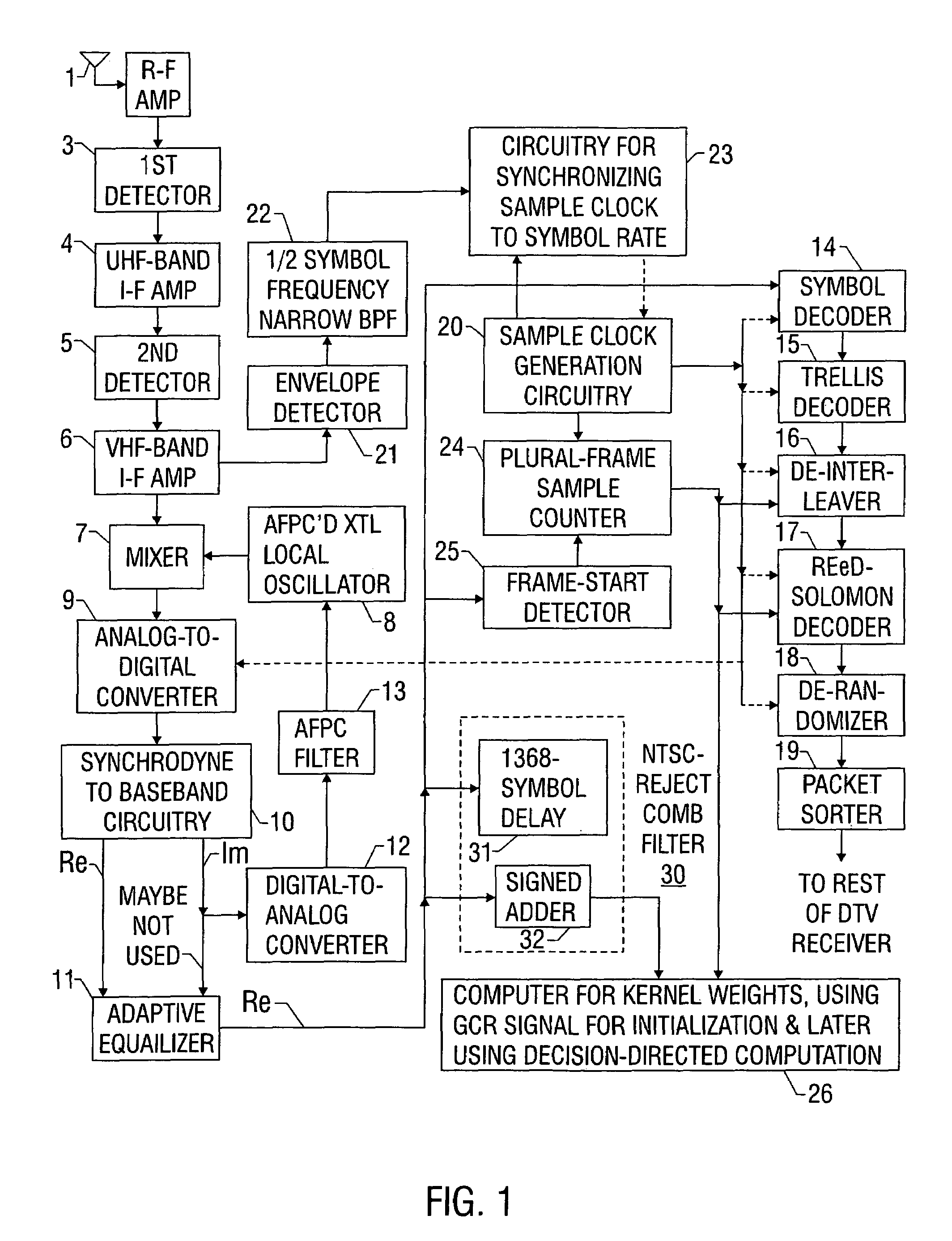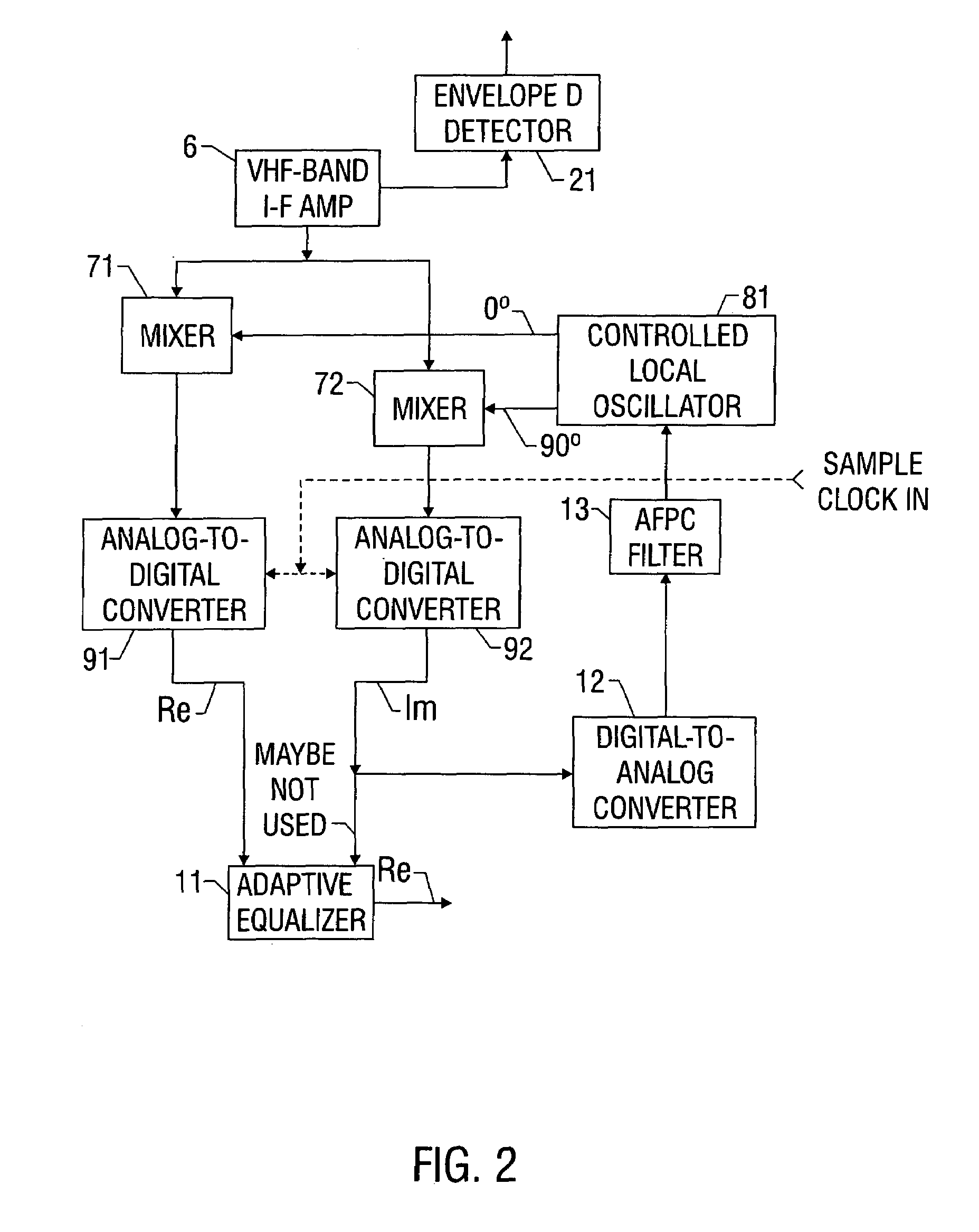DTV signal with GCR components in plural-data-segment frame headers and receiver apparatus for such signal
- Summary
- Abstract
- Description
- Claims
- Application Information
AI Technical Summary
Benefits of technology
Problems solved by technology
Method used
Image
Examples
Embodiment Construction
[0030]In FIG. 1 antenna 1 represents all sources of radio-frequency (RF) television signals to the receiver shown therein. The FIG. 1 VSB DTV signal receiver is used for recovering error-corrected data in packet form, which packets are suitable for recording by a digital video cassette recorder or for decoding and presentation in a television set. The FIG. 1 receiver includes a radio-frequency (RF) amplifier 2 for amplifying a selected RF signal for application to first detector circuitry 3 for conversion to a first intermediate-frequency (I-F) signal. The first IF signal is in an ultra-high-frequency (UHF) intermediate-frequency band located above 890 MHz, the upper limit frequency of channel 83, the highest frequency ultra-high-frequency TV broadcast channel. The RF amplifier 2 has a bandpass filter that limits the frequency range of radio-frequency input signals to the 50 to 890 MHz band, rejecting image frequencies above the first IF band. The RF amplifier 2 also includes a broa...
PUM
 Login to View More
Login to View More Abstract
Description
Claims
Application Information
 Login to View More
Login to View More - R&D
- Intellectual Property
- Life Sciences
- Materials
- Tech Scout
- Unparalleled Data Quality
- Higher Quality Content
- 60% Fewer Hallucinations
Browse by: Latest US Patents, China's latest patents, Technical Efficacy Thesaurus, Application Domain, Technology Topic, Popular Technical Reports.
© 2025 PatSnap. All rights reserved.Legal|Privacy policy|Modern Slavery Act Transparency Statement|Sitemap|About US| Contact US: help@patsnap.com



